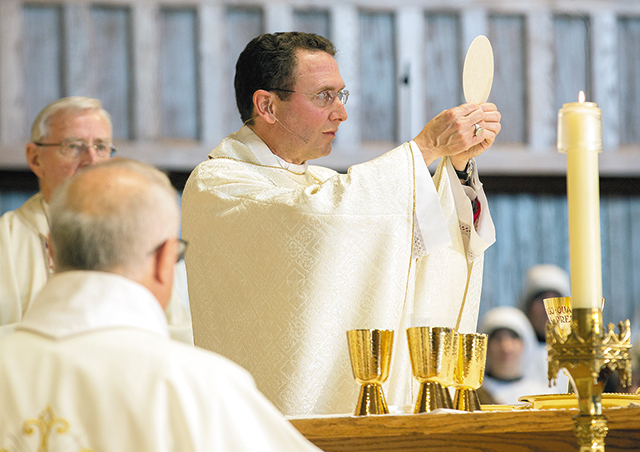What is THIS that Jesus is referring to?

It is the fulfillment of the ritual sacrificial meal that the Israelites were asked to celebrate annually, in order to recall (“in memory of me”) the night that the Lord acted in a powerful way to set them free from Egyptian enslavement (Exodus 12).
“At the Last Supper, on the night he was betrayed, our Savior instituted the Eucharistic sacrifice of his Body and Blood. This he did in order to perpetuate the sacrifice of the cross throughout the ages until he should come again, and so to entrust to his beloved Spouse, the Church, a memorial of his death and resurrection” (CCC 1323).
The Last Supper was also the first Mass, which is a ritual sacrifice wherein Jesus offers his body sacramentally and renews the Sacrifice on the Cross.
The words of consecration are not to be said outside of the ritual of the Mass wherein the Lamb is sacrificed to set us free from our sins, just as the Passover Lamb of the Old Testament was sacrificed to set the Israelites free from Egypt.
And just as that sacrifice concluded with a ritual meal eating the Passover Lamb, so the sacrifice of the Mass concludes with a ritual meal wherein we are invited to eat the Lamb of God, Jesus Christ, in the Sacrament of the Eucharist.
Why do I have to attend Mass in Person?
Jesus Christ offers the perfect and pleasing sacrifice to His Father and we, as members of the body of Christ, are privileged to offer this sacrifice of ourselves by being physically present.
Many have gotten into the habit of watching Mass virtually. This practice is a praiseworthy devotion for those who are unable to get to Mass but watching Mass virtually is different than being physically present to participate at a Mass being offered.
It’s as different as being in the same room with a spouse or family member you love versus talking to them on Zoom or Skype.
We are grateful for those technologies when physical presence is not possible, but they are no substitute for actual physical presence.
The sacrifice, the offering, of Jesus to the Father is made in the ritual celebration of the Mass.
The same Jesus who offered himself on the cross at Calvary is the same Jesus who offers himself on the altar at Mass: Same priest, same victim, and the same purpose.
While those watching virtually are able to receive the graces of the Eucharist through an act of spiritual communion, we are not able to participate in the sacrificial offering of ourselves with Jesus to the Father except by being physically present at the sacrificial offering.
Christus Totus, the Total Christ in the head (the priest), and the body (the faithful) offers the Holy Sacrifice of the Mass, each in their own way.
“The ‘subject’ of the liturgy’s intrinsic beauty is Christ himself, risen and glorified in the Holy Spirit, who includes the Church in his work . . . The Church celebrates the Eucharistic sacrifice in obedience to Christ’s command, based on her experience of the Risen Lord and the outpouring of the Holy Spirit. For this reason, from the beginning, the Christian community has gathered for the fractio panis on the Lord’s Day.” (Sacramentum Caritatis 36, 37).

